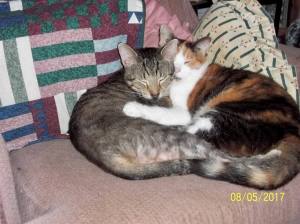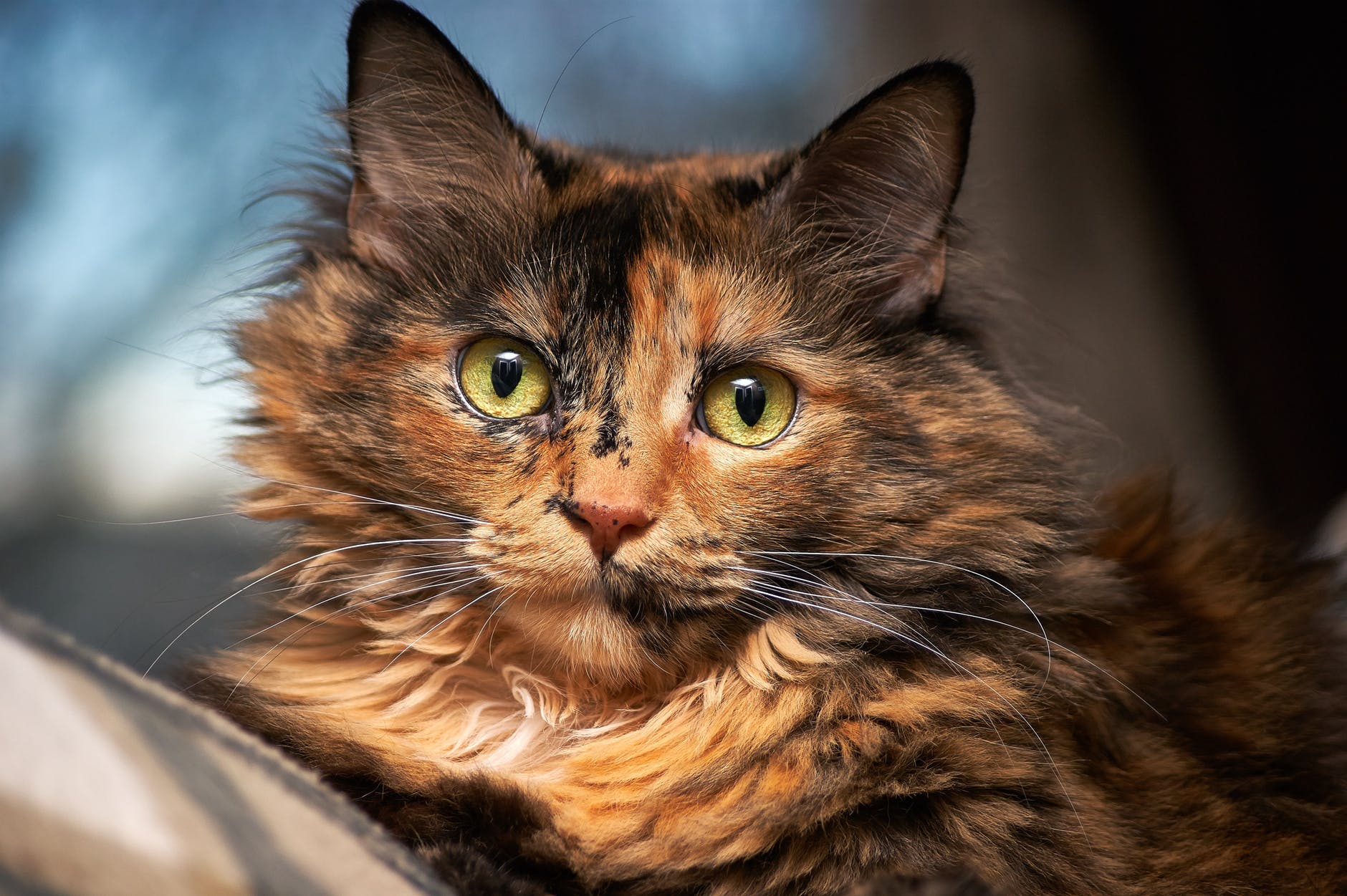
All our cats have nicknames. Some more than one.
Louise was The Queen of Everything.
Garcia was Mr. Underfoot.
Dushenka is Ms. Crazy Eyes.
(Everyone was Baby-Cat except Louise. Other memorable cats have been Matches (Badness, Checkers), Chelsea (Chips), Shaker (What-a-Pie), Maggie (Gelfling, Gertzie-Girl), Laurel (Keet), Joliet (The Silly Pet), and Bijou (Angel Kitty). But I digress.)
Then there was Django. (He was named after guitarist Django Reinhardt. I figured if Dan could have a cat named after a guitarist, so could I. But I digress again.) A robust gray-and-white male, he was the one we called Sir Boinks-a-Lot.
Would you like to guess how he got his name? Hint: It wasn’t because he boinked a lot.
No, he just tried to boink a lot.
Gender didn’t matter. He would go after either boy-cats or girl-cats – neither with any degree of success. He was neutered. His intended didn’t even have to be another cat. Or even animate. We once caught him trying to mount a feather duster.
But the escapade that earned him his nickname was when he tried to have carnal knowledge of my husband’s elbow. Never mind that there was no orifice. Sir Boinks-a-Lot was determined to make one. He kept drilling and drilling, but he never struck pussy (so to speak).
Dan’s theory was that when he worked on his computer, his forearm resembled the shape of an aroused female cat. His hand and wrist were the head, his arm the body, and his raised elbow the…er…target zone. Or it could be that Django was near-sighted with no sense of smell.
My theory was just that he was a horny bastard. (Django, I mean. We will not discuss how pets come to resemble their owners. But I digress yet again.)
He was also camera shy, which is why there’s a stand-in for him here, but then again, who wants their sexual peculiarities displayed all over the Internet? No, wait. Don’t answer that.
Alas, Sir Boinks-a-Lot is no longer with us, though he proved as determined about fighting cancer as he was about finding someone or something that welcomed his advances. We still miss him terribly.
I think even Dan’s elbow misses him a little. Although it’s tough to tell with an elbow.

 No, this isn’t going to be a post about me and my husband, although it’s true that we’re growing older (every day) and we’re still together (after nearly 40 years).
No, this isn’t going to be a post about me and my husband, although it’s true that we’re growing older (every day) and we’re still together (after nearly 40 years). They look so innocent, don’t they? Of bank robbery and murder, as my Dad would have said. In actuality, these cats are naughty little fiends who try to get away with anything they can, including chicken bones if we don’t keep a sharp eye out and a lid on the garbage can.
They look so innocent, don’t they? Of bank robbery and murder, as my Dad would have said. In actuality, these cats are naughty little fiends who try to get away with anything they can, including chicken bones if we don’t keep a sharp eye out and a lid on the garbage can.



 Other things we do for cats are less ridiculous. My husband and I, and a number of people we know, have been trained and trusted with our cats’ medical procedures. Most people can give pills or liquid medicines, eye drops or ear drops at home. (Although even these duties are not for the faint of heart. One of our cats invented the sport of projectile drooling when given a pill.)
Other things we do for cats are less ridiculous. My husband and I, and a number of people we know, have been trained and trusted with our cats’ medical procedures. Most people can give pills or liquid medicines, eye drops or ear drops at home. (Although even these duties are not for the faint of heart. One of our cats invented the sport of projectile drooling when given a pill.)
